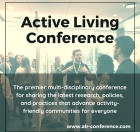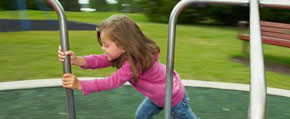We are pleased to announce an exciting new alliance between Active Living Research and GP RED to co-host and coordinate...
Influences of Physical Environment on Corridor Walking Among Assisted Living Residents: Findings From Focus Group Discussions
Lu, Z., Rodiek, S.D., Shepley, M.M., & Duffy, M. (2011). Influences of Physical Environment on Corridor Walking Among Assisted Living Residents: Findings From Focus Group Discussions. Journal of Applied Gerontology, 30(4), 463-484.
Walking has multiple physical and psychological benefits for older people. This study explores corridor walking behaviors and perceptions of corridor walkability in assisted living residents. Focus groups were conducted with 50 residents in six assisted living facilities in Texas. The data were analyzed by the constant comparative method. The findings revealed three types of corridor walking: walking to destination, walking for exercise, and walking for interaction. Residents' perception of corridor walkability was related to the themes of safety, comfort/convenience, and aesthetics. Qualities of design elements that residents used to judge corridor walkability included continuity and graspability of handrails, coverage of carpeted floor, availability of seating, appropriate size of the corridor (i.e., width and length) and the elevator, appropriate locations of activity spaces and restrooms, and presence of artwork, window views, and plants. The findings provide insights to environmental interventions that may promote walking among sedentary residents.
Related Tools & Resources
STAY UP TO DATE
RECENTLY ADDED TOOLS & RESOURCES
MOVE! A BLOG ABOUT ACTIVE LIVING
The "Active Living Conference" aims to break down research and practice silos and...







